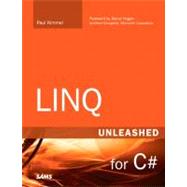
Paul Kimmel is a four-time Microsoft MVP, the author of over a dozen books on object oriented programming and UML, including three books on Microsoft .NET, a columnist for codeguru.com, developer.com, informit.com, devsource.com, and devx.com, a cofounder of the Greater Lansing Area .NET Users Group (glugnet.org, East Lansing and Flint), a full-time software developer, and sometimes pilot. Paul still lives and works in the greater Lansing, Michigan, area (and hasn’t given up on the economy). After 15 years of independent consulting, Paul now works for EDS as an application architect.
| Introduction | p. 1 |
| Getting Ready for LINQ | |
| Programming with Anonymous Types | p. 5 |
| Using Compound Type Initialization | p. 29 |
| Defining Extension and Partial Methods | p. 61 |
| yield return : Using .NETrsquo;s State Machine Generator | p. 85 |
| Understanding Lambda Expressions and Closures | p. 97 |
| Using Standard Query Operators | p. 121 |
| LINQ for Objects | |
| Sorting and Grouping Queries | p. 137 |
| Using Aggregate Operations | p. 151 |
| Performing Set Operations | p. 167 |
| Mastering Select and SelectMany | p. 185 |
| Joining Query Results | p. 211 |
| Querying Outlook and Active Directory | p. 239 |
| LINQ for Data | |
| Querying Relational Data with LINQ | p. 265 |
| Creating Better Entities and Mapping Inheritance and Aggregation | p. 289 |
| Joining Database Tables with LINQ Queries | p. 309 |
| Updating Anonymous Relational Data | p. 349 |
| Introducing ADO.NET 3.0 and the Entity Framework | p. 383 |
| LINQ for XML | |
| Extracting Data from XML | p. 415 |
| Comparing LINQ to XML with Other XML Technologies | p. 437 |
| Constructing XML from Non-XML Data | p. 453 |
| Emitting XML with the XmlWriter | p. 463 |
| Combining XML with Other Data Models | p. 469 |
| LINQ to XSD Supports Typed XML Programming | p. 485 |
| Index | |
| Table of Contents provided by Publisher. All Rights Reserved. |
The New copy of this book will include any supplemental materials advertised. Please check the title of the book to determine if it should include any access cards, study guides, lab manuals, CDs, etc.
The Used, Rental and eBook copies of this book are not guaranteed to include any supplemental materials. Typically, only the book itself is included. This is true even if the title states it includes any access cards, study guides, lab manuals, CDs, etc.